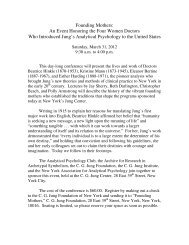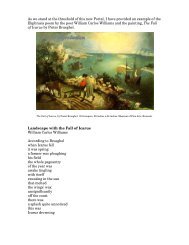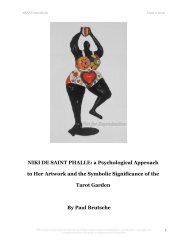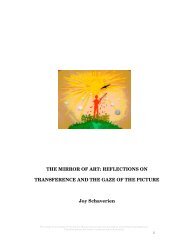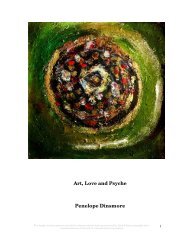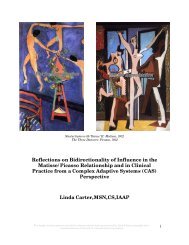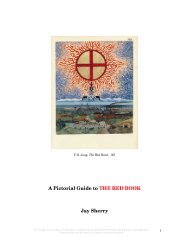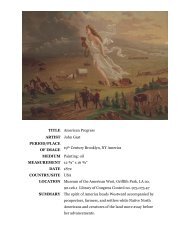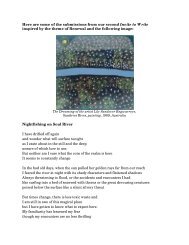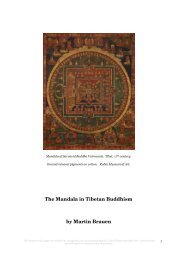Pictorial Space throughout Art History: Cézanne and ... - ARAS
Pictorial Space throughout Art History: Cézanne and ... - ARAS
Pictorial Space throughout Art History: Cézanne and ... - ARAS
You also want an ePaper? Increase the reach of your titles
YUMPU automatically turns print PDFs into web optimized ePapers that Google loves.
<strong>ARAS</strong> Connections Issue 2, 2012<br />
<strong>Pictorial</strong> space models the structure of an evolving personality (5)<br />
Great literature moves us profoundly in part because it tells us something<br />
profound about what it is to be a person. But why does a great painting move us<br />
in the same way, even when its subject matter may be abstract or mundane?<br />
Some of our greatest literature is based upon the myth of the hero's<br />
journey to the underworld. The stories of Inanna, Gilgamesh, The Odyssey,<br />
Beowulf, the New Testament, <strong>and</strong> Dante's Inferno are examples. The myth of the<br />
hero's journey occurs in isolated cultures, in stories of the Australian aborigines,<br />
of the Polynesians, <strong>and</strong> of native peoples of South America, in myths from Africa<br />
<strong>and</strong> so on. Perhaps each of these cultures created it independently, or perhaps we<br />
created this myth when our species first evolved <strong>and</strong> then carried it with us<br />
wherever we went. Either way it seems clear that the myth expresses something<br />
fundamental about the human condition.<br />
Freud <strong>and</strong> Jung both showed that our personalities widen <strong>and</strong> deepen as<br />
we become more conscious of images, thoughts, <strong>and</strong> feelings which had been<br />
hidden in the unconscious. Jung showed that the myth of the hero's journey is a<br />
metaphor for this development. In this myth the hero brings back treasure from<br />
the underworld <strong>and</strong> shares it with others. If we explore the unconscious then we<br />
may contribute artistically or through some other form of leadership. Jung called<br />
such development individuation because it leads us away from collective attitudes<br />
<strong>and</strong> closer to our individual potential. Gauguin illustrates the point. Had he<br />
remained a banker he might have remained uneasily within collective attitudes;<br />
by becoming a painter he became more individual.<br />
The images in this paper are strictly for educational use <strong>and</strong> are protected by United States copyright laws. 62<br />
Unauthorized use will result in criminal <strong>and</strong> civil penalties.



